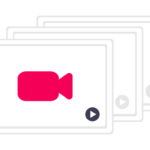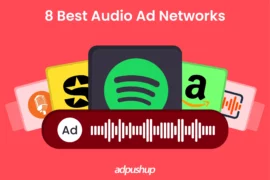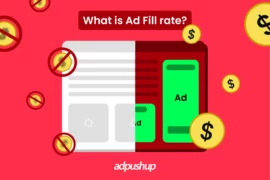Improve your advertising strategy and maximize your ad spend with our comprehensive guide on programmatic direct. Learn about the key features, the difference between open and private auctions, preferred deals, and more.
The advertising industry is complex. There are already a few known methods to sell and purchase ad space (inventory). One of them is programmatic direct.
The programmatic buying process involves multiple units such as ad exchanges, ad networks, supply-side platforms, and demand-side platforms.
These units work together to provide a seamless experience for publishers and advertisers in managing their inventory. One of the key methods for publishers to handle their inventory is programmatic direct.
As programmatic ads are increasingly becoming popular, one of the best ways to go about it can be programmatic direct. In fact, according to MarTech, by 2026, we can expect 86% of overall digital advertising revenue to come from programmatic ads.
Given this trend, it is important to take note of the specific sub-category of programmatic advertising – programmatic direct, which is becoming increasingly adopted by advertisers and publishers alike
What is Programmatic Direct?
Programmatic Direct is a direct deal between seller and buyer, eliminating the need for ad exchange parties.
Here, an advertiser gets an invite from the publisher directly to purchase his inventory at a negotiated price for a fixed time interval.
Programmatic direct enables advertisers to get guaranteed ad impressions by displaying ads on the publisher’s premium web pages (home page or landing page). Both parties sit together to agree on a fixed CPM and close the deal.
For publishers, it’s a great opportunity to sell their premium inventory to only interested buyers. And for advertisers, their ads can reach a specific audience by purchasing inventories offering guaranteed impressions.
How Programmatic Direct Works?
Since programmatic direct allows advertisers to buy ad inventory directly from a publisher, the process is very straightforward.
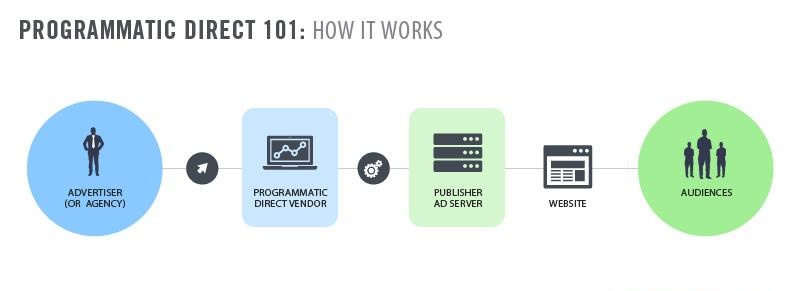
Here is how it works:
Proposal: The publisher or advertiser contacts the other party through a Demand Side Platform (DSP) to propose an ad inventory package at a fixed cost per thousand impressions (CPM).
Negotiation: After that, both parties negotiate until a mutually beneficial deal is reached, which is mainly about deciding CPM.
Campaign Execution: Once the deal is made, the advertiser then runs their campaign using programmatic technology, reaching the right audience at the right time through the publisher’s digital property
Furthermore, programmatic direct is a subset of programmatic advertising which is accompanied by two other types.
Here’s a brief on each:
1. Real-Time Bidding (RTB)
Real-time bidding is a completely automated process where publishers submit their ad space for sale and advertisers place their bid in real-time. The highest bidder gets the inventory to display ads. And this entire process takes less than a fraction of a second.
2. Private Marketplace (PMP)
PMP is more like an invitation-based RTB. here, publishers invite specific buyers to bid on their inventory. And exactly like RTB, the ad space is purchased and ads are displayed in real-time. PMP is more private and secure than RTB.
Now since you’re here to know more about what is programmatic direct, let’s dive deep into it and understand how it differs from programmatic deals.
Also Read – Real-Time Bidding vs Programmatic Direct – AdPushup
Difference Between Programmatic Direct & Programmatic Deals?
Programmatic direct model may sound similar to the private marketplace (PMP) but they have multiple differences. In the case of programmatic direct, the advertiser and publisher agree on a fixed CPM rather than multiple advertisers bidding for the inventory.
Unlike other programmatic deals, direct deals offer guaranteed agreements. Moreover, the advertiser gets a fixed number of impressions at a fixed price.
Most importantly, publishers know to whom (advertisers) they are selling their ad spaces and advertisers know where their ads are being displayed.
A programmatic direct deal requires more human involvement than any other programmatic deal. In the case of real-time bidding, the publishers put up their inventory for all buyers and the one with the highest bid gets to display the ad. Whereas, programmatic direct deals are cozier and include negotiation.
Also Read – The Four Types of Programmatic Deals (2023 Update)
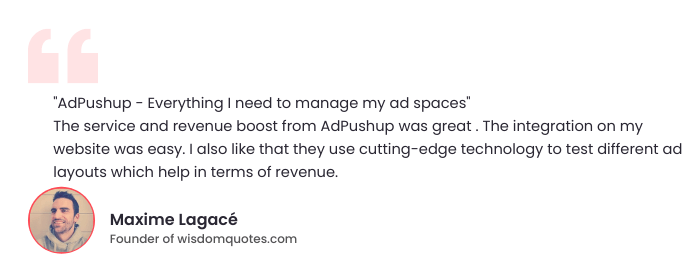
Types of Programmatic Direct Advertising
Now that you know what is programmatic direct, let’s understand its three main types.
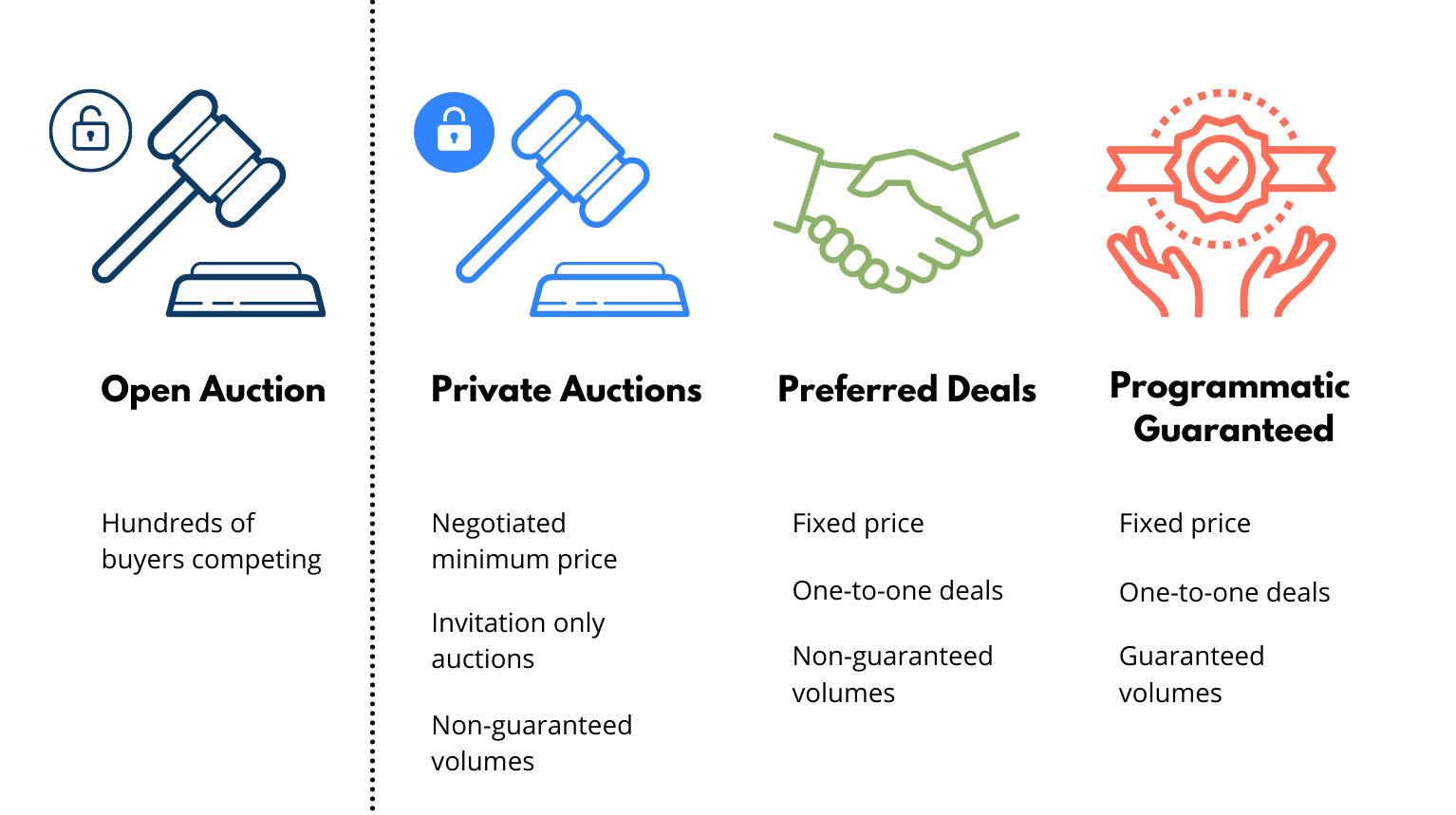
Private Auctions
Unlike open-auctions, where any buyer can enter and bid for the ad space, private auctions are conducted for exclusive buyers. Only advertisers who are invited will be eligible to be a part of the private auction.
Moreover, in private auctions, publishers may set a minimum price rule for their ad inventory. This type of auction is usually set forth to ensure ad relevancy and to provide preferential treatment to certain advertisers.
Preferred Deals
Another type of programmatic direct advertising is preferred deals, wherein one-on-one negotiation takes place between publisher and advertiser. The agenda of these negotiations is deciding on a certain CPM for an appropriate programmatic placement.
Preferred deals can be beneficial for both the publisher and the advertiser, as it ensures that the advertiser will have access to the inventory they need, while the publisher can guarantee a certain level of revenue.
However, the advertiser is not bound to purchase the inventory. They are just given the opportunity to purchase first and that too in a direct manner.
Guaranteed Deals
Guaranteed deals are a lot like preferred deals. But, in this type of programmatic direct type, the advertiser is required to buy the ad space. They can’t step away. Advertisers need to buy the ad space at a fixed CPM.
Guaranteed deals can be a great option for both parties. It’s because advertisers get to buy the premium ad inventory at a mutually decided price and volume. On the other hand, publishers receive a guaranteed revenue stream.
Also Read – Programmatic Deals vs. Direct Deals | Adpushup
Pros & Cons of Programmatic Direct
Programmatic direct is a good idea for you (publisher) if you want the control in your hand. Especially on the landing page and homepage of the site where a publisher wants complete authority.
Pros of Programmatic Direct
1. Quality
All an advertiser wants is quality impressions on his ads. And programmatic direct ad provides a quality impression where the audience can be targeted based on demographics (location, age, gender, preferences, education, and more). In return for such inventory, advertisers pay a good price.
2. Control
Here, the publisher gets complete command over the ads that are being displayed. Not just the type of ad but also the physical distribution on the webpage. And for advertisers, it becomes easy to plan campaigns when they are getting sure-shot impressions for a fixed time period.
3. Security
By offering their inventory to specific buyers, there is almost no chance of malvertisement. As the entire process occurs in a single system, programmatic direct simplifies sales and reduces the scope for human error.
4. Better Returns
Another pro of programmatic direct advertising is that it ensures publishers’ premium ad spaces are getting covered by advertisers with the best possible rates. In comparison with the free market, it can be a much better option for the parties.
5. Accountability
In the digital advertising industry, one of the major concerns for many people has been counterfeit traffic. Counterfeit traffic refers to fake traffic. A publisher may do this with the intent to make his audience greater than what it actually is.
Cons of Programmatic Direct
Yes, nothing is perfect. Even the fastest-growing and buzz-causing programmatic direct has some drawbacks.
1. Can’t Sell All Inventory
Surely, programmatic direct sounds like a great option to maximize yield from digital inventory while maintaining security. However, a publisher cannot sell all the ad spaces using this method.
Simply, because advertisers are not going to purchase them. Programmatic direct is an ideal method to sell only the exclusive and high-yielding inventory.
2. Not Flexible
A publisher and an advertiser have to agree on a fixed price for a fixed time interval. Once the deal is done, neither can make changes even if the ads are not getting as many impressions as they were supposed to.
3. High Threshold
For small advertisers, it can be hard to get hold of such exclusive inventory because a.) they won’t be invited by the publisher, and b.) even if they are invited, they might not be able to pay high prices set by the publisher. Hence, they choose easier methods like RTB over the private auction.
Thankfully, with the help of targeted deals, the risk is mitigated as the process is more specific and ad targeting is very precise.
4. No Guarantee of the entire ad space filling
Though it’s true that programmatic direct advertising comes with plenty of benefits, it doesn’t ensure that the whole of the publisher’s ad space will be filled.
While most high-end publishers may have enough interest from many advertisers to sell their entire inventory, there are always exceptions to the rule. In cases where a publisher is unable to sell all of their inventory, they may opt to sell the remaining stock on ad exchanges.
5. Ad Server Access to Buyers
Another con of buying programmatic advertising direct is, publishers will need to provide buyers with direct access. Publishers will be required to allow access of their ad server via API.
Not only that, part of buying programmatic advertising direct also includes additional communication and collaboration between both parties.
How To Get Started With Programmatic Direct?
Using Google Ad Manager, a programmatic direct deal can be carried out with a few clicks. In a simple way, the publisher starts a programmatic direct deal and the buyer can accept the terms.
Both parties should agree to the Google Ad Manager Policy to continue.
Here’s is how a publisher can set up programmatic direct:
Step 1: Enable And Configure Programmatic Direct
Before you get started, make sure you have an Ad Exchange Account with Google Ad Manager.
- In Ad Manager, go to Admin > Global settings > Features.
- Toggle the Programmatic Direct button to turn it on.
- Save the settings.
Once you’ve enabled programmatic direct, it’s time to configure it. Configuring the deal will give you a name in the marketplace. And the marketplace is where you’re able to find buyers.
Note: Once Programmatic Direct is turned on in your network, it can’t be turned off. The option is hidden after saving.
Step 2: Configure Display Environment For Campaign
The environment helps buyers to identify the channel (format of inventory) in which ads are going to be displayed. The available options to set the environment are Display, Mobile App, and In-stream video.
There are things to keep in mind while configuring the environment are; one Ad Exchange account can be linked to one or more environments. However, an environment can’t be linked to multiple Ad Exchange accounts.
Google Ad Exchange applies numerous restrictions to programmatic deals. These restrictions are to ensure the security of both sellers and buyers. The best way to avoid being restricted is to go along with Google Ad Manager Policy.
Key Points
In the US, one in every two dollars spent programmatically now runs through a direct deal. Programmatic direct deals are embraced by both publishers and advertisers offering them more control and efficiency than other traditional methods.
These direct deals offer guaranteed results but can be hard to negotiate. Also, only selected buyers can participate in the deal which can create problems for the rest of the advertisers to get quality impressions.
In totality, it’s difficult to predict that programmatic direct is the future of programmatic advertising. Considering the fact, real-time bidding and private auction are still thriving and making their way up in the charts.
Frequently Asked Questions – Programmatic Direct
It’s a method of buying digital advertising space where the buyer can purchase ad space directly from a publisher, instead of buying through an ad exchange.
No, programmatic direct is generally used by publishers and advertisers to make a deal about the premium ad spaces of the publishers.
An example of programmatic direct advertising can be a brand(advertiser) working with a specific publisher, such as a news website, to purchase ad space on their site directly.

Deepak has a keen eye for detail and a deep understanding of the ad tech landscape. Whether it’s through in-depth articles, thought-provoking insights, or compelling storytelling, he’s dedicated to helping people navigate the complex world of ad tech with the simplicity of his words.


